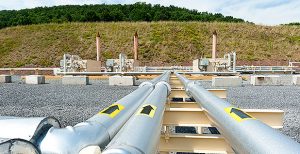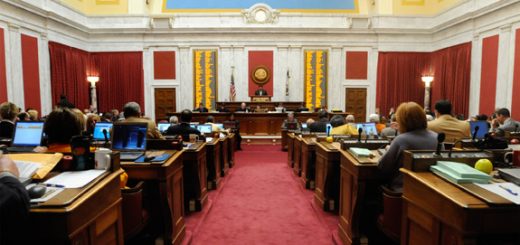FERC keeps Obama guidance alive in manual for gas projects
Hannah Northey, E&E News reporter
While President Trump has vowed to dismantle his predecessor’s climate legacy, federal energy regulators rolled out a guidance this week calling for developers of natural gas pipelines to assess their project’s impacts on global warming.
The Federal Energy Regulatory Commission released a 246-page manual that advises pipeline developers to calculate their projects’ greenhouse gases and weigh the impact on local, state or regional climate goals.

Federal regulators yesterday released guidance for pipeline developers that includes references to climate change, language that some analysts say President Trump could revise. Photo by Max Phillips/Beyond Coal and Gas, courtesy of Flickr.
Companies are also advised, but not required, to assess threats from rising sea levels or storm surge flooding on the proposed pipelines, export terminals and compressor stations.
While FERC has been complying with the Obama-era climate guidance for months now, the agency staff’s language is notable given Trump’s skepticism of human-induced global warming alongside a push to fast-track the environmental reviews and construction of oil and gas infrastructure.
The FERC document highlights climate change as a “global concern” and cites an initiative former President Obama launched last year through the White House Council on Environmental Quality.
CEQ last summer issued final guidance calling on federal agencies to quantify projected greenhouse gas emissions in their National Environmental Policy Act reviews.
FERC, which leads environmental reviews of interstate gas pipelines, advised developers to account for local effects on climate.
“Although climate change is a global concern, the CEQ has indicated that NEPA analyses regarding climate change should focus locally or regionally,” agency staff wrote. “You should provide the data needed to support our NEPA analysis (e.g., the project’s contribution to GHG emissions; local or state GHG emissions; and any local, state, or regional goals for GHG emissions or climate change).” Full story HERE

























































